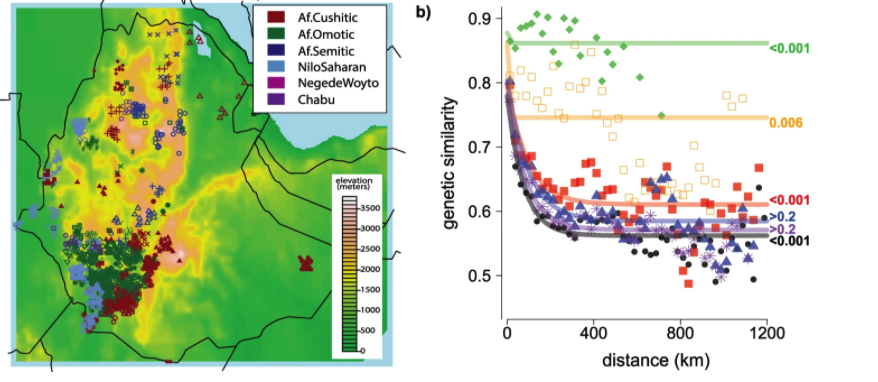


Using primarily new genetic variation data covering 1,214 Ethiopians representing 68 different ethnic groups, together with information on individuals’ birthplaces, linguistic/religious practices and 31 cultural practices, we disentangle the effects of geographic distance, elevation, and social factors on the genetic structure of Ethiopians today.
We provide evidence of associations between social behaviours and genetic differences among present-day peoples. We show that genetic similarity is broadly associated with linguistic affiliation, but also identify pronounced genetic similarity among groups from disparate language classifications that may in part be attributable to recent intermixing. We also illustrate how groups reporting the same culture traits are more genetically similar on average and show evidence of recent intermixing, suggesting that shared cultural traits may promote admixture.
In addition to providing insights into the genetic structure and history of Ethiopia, we identify the most important cultural and geographic predictors of genetic differentiation and provide a resource for designing sampling protocols for future genetic studies involving Ethiopians.
Ethiopia is one of the world’s most ethnically and culturally diverse countries, with over 70 different languages spoken across more than 80 distinct ethnicities (www.ethnologue.com). Its geographic position and history (briefly summarised in Supplementary Note 1) motivated geneticists to use blood groups and other classical markers to study human genetic variation1,2. More recently, the analysis of genomic variation in the peoples of Ethiopia has been used, together with information from other sources, to test hypotheses on possible migration routes at both ‘Out of Africa’ and more recent “Migration into Africa” timescales3,4. The high genetic diversity in Ethiopians facilitates the identification of novel variants, and this has led to the inclusion of Ethiopian data in studies on the genetics of elite athletes5,6,7, adaptation to living at high elevation8,9,10,11, milk drinking12,13,14, tuberculosis15,16, and drug metabolising enzymes17,18,19.